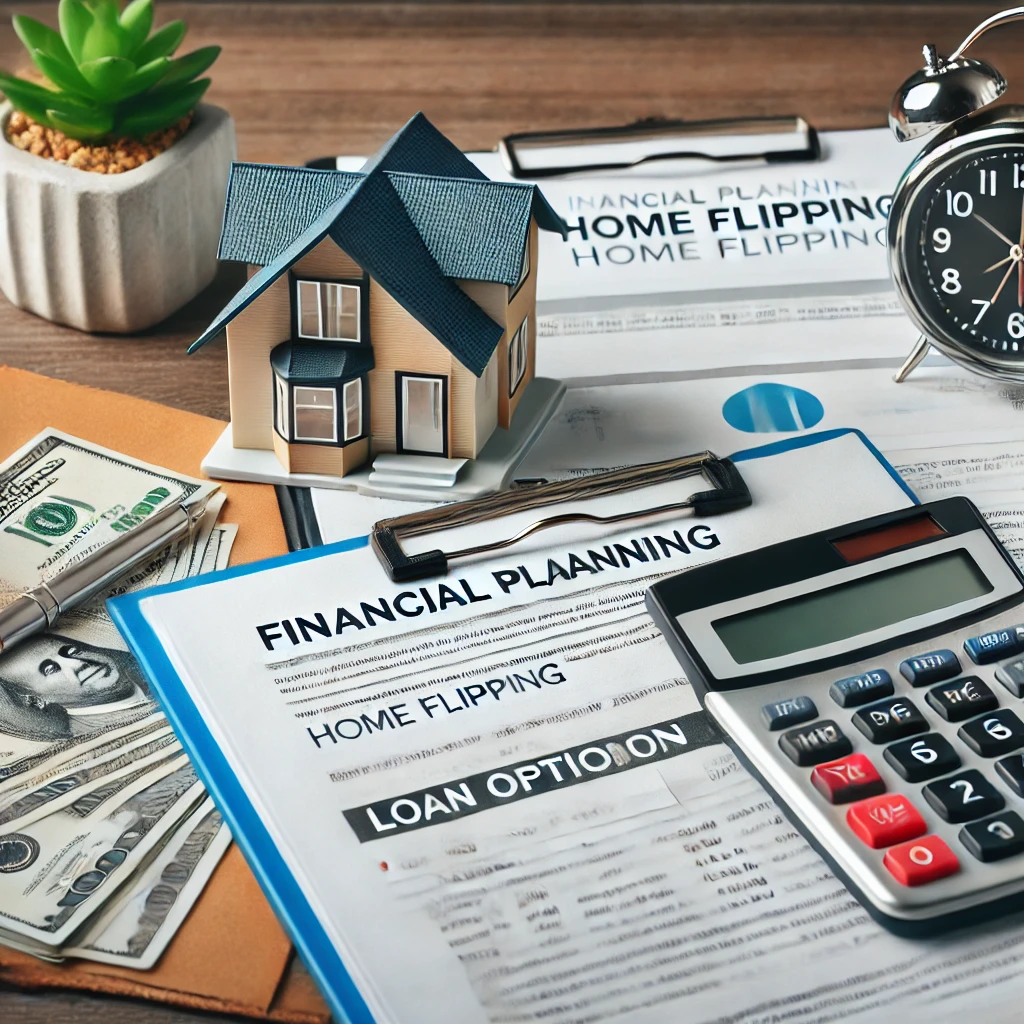Financing a home flip is one of the most important aspects of ensuring your project is profitable. Unlike traditional home purchases, flips often require short-term financing solutions that can cover both the cost of the property and renovations. Whether you’re a seasoned investor or flipping your first home, understanding the different loan options available will help you make the best financial decisions for your project.
In this guide, we’ll break down the best financing options for home flippers, from traditional loans to creative alternatives that can help you fund your next flip. By leveraging the right loan strategy, you can control your costs, reduce risk, and maximize your profits.
1. Hard Money Loans: Fast but Expensive
Hard money loans are a popular option for home flippers, especially those who need quick access to capital. These loans are typically issued by private lenders or investment groups and are based on the value of the property, not the borrower’s credit score or income.
- Quick Approval: Hard money loans are known for their fast approval times, often taking just a few days. This makes them ideal for competitive markets like Seattle, where speed can be critical in securing the right property.
- Higher Interest Rates: The downside of hard money loans is their high-interest rates, which can range from 8-15%, depending on the lender. These loans are typically short-term, lasting 6 to 12 months, so it’s important to flip the home quickly to avoid high interest costs.
Pro Tip: Hard money loans are best used for flips that require significant renovation and where traditional financing might not be available due to the condition of the property. Just be sure to factor in the high interest rates when calculating your potential profits.
2. Fix-and-Flip Loans: Tailored for Flippers
Fix-and-flip loans are specifically designed for investors looking to buy, renovate, and resell properties. These loans are often offered by private lenders and banks that specialize in real estate investment financing.
- Loan Amounts Based on ARV: Many fix-and-flip loans base the loan amount on the property’s after-repair value (ARV), which allows you to borrow not just for the purchase price but also for renovation costs. This can be especially useful for large-scale flips where the cost of repairs is significant.
- Short-Term Financing: Like hard money loans, fix-and-flip loans are short-term and designed to be paid off once the home is sold. Interest rates are generally lower than hard money loans but higher than traditional mortgages, typically ranging from 6-12%.
Pro Insight: In markets like Seattle, where renovation costs can be high, a fix-and-flip loan can provide the flexibility needed to cover both the purchase and rehab expenses. Make sure you have a clear timeline and budget in place to avoid running into repayment issues.
3. Home Equity Line of Credit (HELOC): Leverage Your Existing Equity
If you already own a property, you may be able to use a Home Equity Line of Credit (HELOC) to finance your flip. A HELOC allows you to borrow against the equity in your current home, giving you a revolving line of credit that can be used to purchase and renovate your flip property.
- Lower Interest Rates: HELOCs typically come with lower interest rates compared to hard money or fix-and-flip loans, making them an attractive option if you have substantial equity built up in your existing home. Rates can range from 3-6%, depending on market conditions.
- Flexible Use of Funds: The beauty of a HELOC is its flexibility—you can withdraw funds as needed, making it easier to cover renovation costs as they arise. However, keep in mind that you’re putting your existing home at risk if the flip doesn’t go as planned.
Pro Tip: HELOCs are a great option if you’re flipping a smaller, lower-cost home and have a solid plan in place. However, be cautious about overleveraging your primary residence to finance a flip, as this increases your financial risk.
4. Personal Loans: Quick but Risky
For smaller flips or those who don’t qualify for other types of financing, personal loans can be a viable option. Personal loans are typically unsecured, meaning you don’t need to put up collateral like your home to secure the loan.
- Faster Funding: Personal loans can often be approved quickly, making them a good option if you need to close on a property quickly. However, they usually come with higher interest rates, often between 5-10%, depending on your credit score and the loan terms.
- Limited Loan Amounts: The downside to personal loans is that they often have lower borrowing limits, which may not be enough to cover both the purchase and renovation costs of a larger flip. They are best suited for smaller projects or if you already have some funds available for the purchase.
Pro Insight: If you’re considering using a personal loan, make sure to shop around for the best rates and terms. Personal loans can be a quick solution, but their higher interest rates and shorter terms mean you’ll need to be diligent about keeping renovation costs in check.
5. Private Money Lenders: Flexible Terms for Experienced Flippers
Private money lenders are individuals or groups that provide financing for real estate investors. These loans are typically negotiated directly between the borrower and the lender, offering more flexible terms than traditional banks or hard money lenders.
- Flexible Loan Terms: Private money loans can often be tailored to fit your specific project, with flexibility in terms of interest rates, repayment schedules, and loan amounts. This makes them ideal for experienced flippers who have a strong track record and need customized financing solutions.
- Relationship-Based: Building relationships with private money lenders can lead to repeat business, allowing you to finance multiple flips more easily. However, finding reliable private lenders requires networking and trust.
Pro Tip: If you’re an experienced flipper, developing a network of private money lenders can provide you with the financial flexibility needed to take on larger or more complex flips. Just be sure to document everything clearly and maintain open communication with your lenders to avoid misunderstandings.
6. Cash: The Most Flexible Option
For those who have the financial resources, paying cash for a flip is the most straightforward and flexible option. Cash purchases avoid the complications of loans, interest payments, and strict timelines, giving you full control over the project.
- No Loan Costs: By paying cash, you avoid interest rates, closing costs, and loan fees, which can save you a significant amount of money. This allows you to put more of your budget toward renovations and improvements.
- Faster Transactions: Cash offers are often more attractive to sellers, especially in competitive markets like Seattle. A cash offer can help you close quickly and may even allow you to negotiate a better purchase price.
Pro Insight: While cash gives you more freedom and flexibility, it’s essential to ensure that the flip will provide a solid return on your investment. Paying cash ties up your capital, so make sure the property and market conditions are favorable for a quick sale.
Conclusion
Financing a home flip requires careful planning and a solid understanding of your loan options. From hard money loans to HELOCs, each financing solution has its pros and cons, and the best choice depends on the scope of your project, your experience level, and the market conditions.
By selecting the right loan option and managing your budget effectively, you can ensure that your flip is profitable and that you have the funds available to cover both the purchase and renovation costs. In Seattle’s competitive market, having a strong financial strategy is key to flipping homes successfully and maximizing your return on investment.





